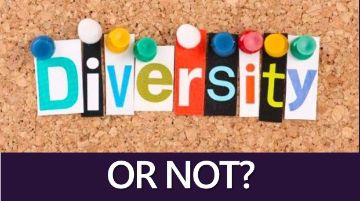
Hip Hip, Hybrid! Here we are again, back to the hype about “hybrid” working. Whilst some companies proudly market themselves as WFH-only, and others suffer from ritual outrage when commanding “everybody back to the office”, most claim with studied conviction that some middle way must be the answer.

Hip Hip, Hybrid!! Here we are again, back to the seasonal hype about “hybrid” working. Whilst some companies proudly market themselves as WFH-only, and others suffer from ritual outrage when commanding “everybody back to the office”, most claim with studied conviction that some middle way must be the path to worker’s paradise. What is going on?
I joined an exciting session with a wonderful Lynda Gratton this morning to talk about the promises of hybrid working. Or rather, as Lynda points out, about the challenges to redesign work. Because in spite of much enthusiasm, we don’t really know whether and how hybrid working actually works — the available data remains far from clear. What is certain, as Lynda explains, is that managing hybrid work is exceptionally difficult. It needs greater skills of management, high degrees of trust, and intentional work design. That said, it is equally evident that we must revisit how our offices are set up. We have often crafted our work environments simply replicating traditional factory designs, without sufficient understanding of the potential (and the constraints) of time, place and community.
Yes to all of that. Which brings me to that curious notion of “hybrid”. The concept stems, of course, from the experimental breeding of new species — like mules, for example, which are hybrids of donkeys and horses. More recently, we also use it as a metaphor for technological innovations offering a mixture of characteristics, like hybrid cars, which support both traditional and electric fuel. So here now comes the fashion of hybrid work. But the notion seems problematic.
- Firstly, because much of its appeal is anchored in a belief in the supremacy of science. The notion of hybridity implies experimentation, Darwin-esque mutations and evolutionary fitness. In other words, hybrid work is supposed to be better, because it was the result of natural evolution under existential pressure, and has been proven to work. People habitually point to the pandemic as the global laboratory of labour that has supposedly certified the successful cross-breeding of office and home working. And, yes, by a stretch of imagination we could indeed envisage consultants and academics rushing around factories and office buildings during covid times — clad in white lab coats, with solemn faces and stopwatches in their hands — busily evaluating all the curious mutations of work. Most certainly, there has been an avalanche of statistics — about productivity, the duration of commutes, work-life balances, employee engagement, and of course office rents and real estate costs — that seems to support claims for hybrid superiority. Yet, as Lynda warns, the data is not conclusive at all. We simply do not know enough to make final judgments about how to best configure our work.
- But there is also a second issue. Do you remember the start of the pandemic when many of us suddenly engaged in a continuous, all-important conversation about the future of work? I certainly do. And I most vividly recall that our objective was not to create a giant petri dish to collectively experiment and generate novel laws of productivity, or even increase individual convenience, but to regain meaning in life at work. We talked about better work in order to lead better lives. And no scientific statistic can ever provide answers to questions of the good life. In this context, Lynda continues, we know another thing about the pandemic: “lots of people never came back”. In Japan, some factories are still empty today. Or closer to home, here in the UK, many of the older workers, of 55-year and beyond, have never returned to work. Why? Research states three reasons: a) they got sick; b) they are caring for somebody who got sick; or c) they simply did not like their work -and couldn’t be bothered to pick it up again. In fact, all our recent debates about conscious and quiet quitting remind us of that last point. Work is not simply a pay check. We must make sure that it is not our only lesson learned during the pandemic that by injecting a bit of homeworking into our companies we might eventually create more of the same, for less.
This, in a nutshell, is the challenge of good leadership. Good leaders must constantly and intentionally reconnect with the essence of work, whilst balancing claims for productivity with requirements for individual and community well-being and the collective good. By the same token, work designs must be crafted wisely and contingently — between autonomy and control, fragmentation and integration, craft and purpose — one size never fits all, neither within, nor across companies. Hence, it is sheer stupidity to condemn Company A as outrageous for demanding employees to be in the office, or to congratulate Company B for declaring that everybody should forever work from home. Whatever those “objective” observers in lab coats might suggest, we are not plants or animals to be cross-bred for higher output, and there are no scientific recipes to solve normative questions. There simply is no guarantee that anyone’s work is better just because we do the same old job, working three days a week from home. As Lynda says, and I wholeheartedly agree, intentionally designing good work is hard. We are unique people and organisations and must find new ways to turn work not only into a means to make a living, but also into an end to make a good life. Whilst the pandemic has mostly ended, the quest for good work certainly continues to be a worthy challenge to embrace.
Hip Hip, Hybrid!! Here we are again, back to the seasonal hype about “hybrid” working. Whilst some companies proudly market themselves as WFH-only, and others suffer from ritual outrage when commanding “everybody back to the office”, most claim with studied conviction that some middle way must be the path to worker’s paradise. What is going on?
I joined an exciting session with a wonderful Lynda Gratton this morning to talk about the promises of hybrid working. Or rather, as Lynda points out, about the challenges to redesign work. Because in spite of much enthusiasm, we don’t really know whether and how hybrid working actually works — the available data remains far from clear. What is certain, as Lynda explains, is that managing hybrid work is exceptionally difficult. It needs greater skills of management, high degrees of trust, and intentional work design. That said, it is equally evident that we must revisit how our offices are set up. We have often crafted our work environments simply replicating traditional factory designs, without sufficient understanding of the potential (and the constraints) of time, place and community.
Yes to all of that. Which brings me to that curious notion of “hybrid”. The concept stems, of course, from the experimental breeding of new species — like mules, for example, which are hybrids of donkeys and horses. More recently, we also use it as a metaphor for technological innovations offering a mixture of characteristics, like hybrid cars, which support both traditional and electric fuel. So here now comes the fashion of hybrid work. But the notion seems problematic.
* Firstly, because much of its appeal is anchored in a belief in the supremacy of science. The notion of hybridity implies experimentation, Darwin-esque mutations and evolutionary fitness. In other words, hybrid work is supposed to be better, because it was the result of natural evolution under existential pressure, and has been proven to work. People habitually point to the pandemic as the global laboratory of labour that has supposedly certified the successful cross-breeding of office and home working. And, yes, by a stretch of imagination we could indeed envisage consultants and academics rushing around factories and office buildings during covid times — clad in white lab coats, with solemn faces and stopwatches in their hands — busily evaluating all the curious mutations of work. Most certainly, there has been an avalanche of statistics — about productivity, the duration of commutes, work-life balances, employee engagement, and of course office rents and real estate costs — that seems to support claims for hybrid superiority. Yet, as Lynda warns, the data is not conclusive at all. We simply do not know enough to make final judgments about how to best configure our work.
* But there is also a second issue. Do you remember the start of the pandemic when many of us suddenly engaged in a continuous, all-important conversation about the future of work? I certainly do. And I most vividly recall that our objective was not to create a giant petri dish to collectively experiment and generate novel laws of productivity, or even increase individual convenience, but to regain meaning in life at work. We talked about better work in order to lead better lives. And no scientific statistic can ever provide answers to questions of the good life. In this context, Lynda continues, we know another thing about the pandemic: “lots of people never came back”. In Japan, some factories are still empty today. Or closer to home, here in the UK, many of the older workers, of 55-year and beyond, have never returned to work. Why? Research states three reasons: a) they got sick; b) they are caring for somebody who got sick; or c) they simply did not like their work -and couldn’t be bothered to pick it up again. In fact, all our recent debates about conscious and quiet quitting remind us of that last point. Work is not simply a pay check. We must make sure that it is not our only lesson learned during the pandemic that by injecting a bit of homeworking into our companies we might eventually create more of the same, for less.
This is why the whole idea of “hybrid work” points into the wrong direction. It is not about “cross-breeding” new variants of work from existing templates, but about intentionally redesigning work in order for it to become the best it can be. By definition, this can never be a question of universal recipes, because we — and our companies — are all unique. For instance, lots of young people and new joiners might want to be in the office. They probably don’t like to sit in a tiny flat, clicking themselves from zoom-to-zoom-call all day long. Middle managers might have big houses, kids or other commitments — and by the way can build on decades of relational capital to do their jobs — so home working could be very compelling. And senior executives, well, they most likely want to be in the office to see what is going on. Alas, beyond individual preferences, which might vary quickly throughout time (homeworking might initially be cool, but quickly turn out to be lonely), there is also the question of what “objectively” makes work good. How can we best develop ourselves and others? How do we individually and collectively learn and grow? What is needed to bring the essence of what our work stands for to flourish? We must never cease to intentionally revisit the question of how work can help to attain the highest potential of everyone involved.
This, in a nutshell, is the challenge of good leadership. Good leaders must constantly and intentionally reconnect with the essence of work, whilst balancing claims for productivity with requirements for individual and community well-being and the collective good. By the same token, work designs must be crafted wisely and contingently — between autonomy and control, fragmentation and integration, craft and purpose — one size never fits all, neither within, nor across companies. Hence, it is sheer stupidity to condemn Company A as outrageous for demanding employees to be in the office, or to congratulate Company B for declaring that everybody should forever work from home. Whatever those “objective” observers in lab coats might suggest, we are not plants or animals to be cross-bred for higher output, and there are no scientific recipes to solve normative questions. There simply is no guarantee that anyone’s work is better just because we do the same old job, working three days a week from home. As Lynda says, and I wholeheartedly agree, intentionally designing good work is hard. We are unique people and organisations and must find new ways to turn work not only into a means to make a living, but also into an end to make a good life. Whilst the pandemic has mostly ended, the quest for good work certainly continues to be a worthy challenge to embrace.
Popular articles in the KnowledgeHub: Good Society





 .
.